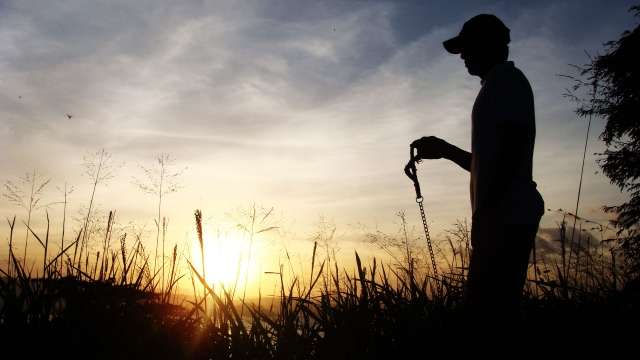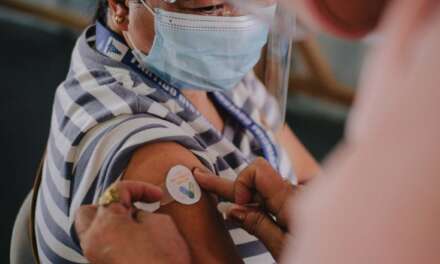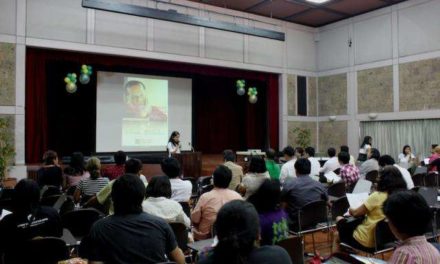23 February 2015
As one of the most populous countries in the world, the Philippines is often characterized as a country marked by inequality and vulnerability despite its middle income status. The southern region of Mindanao, hosting the country’s Muslim minority, suffers from poverty and landlessness, a situation further complicated by armed conflict and competing land claims among different sets of actors. Unfortunately, the right to food of all Filipinos has yet to be fully realized owing to: a lack of a national right to food strategy/framework; conflicting laws and policies especially on land use and trade liberalization; anemic implementation of agrarian reform and protection of indigenous people’s rights; a systematic neglect of the agriculture sector over the last three decades, and lack of coherent climate change adaptation and disaster risk reduction strategies.
The United Nations defines the Right to Food as “the right to have regular, permanent and unrestricted access, either directly or by means of financial purchases, to quantitatively and qualitatively adequate and sufficient food corresponding to the cultural traditions of the people to which the consumer belongs, and which ensure a physical and mental, individual and collective, fulfilling and dignified life free of fear.” The right to food has four dimensions: availability, accessibility (economic and physical), adequacy and food safety. An added dimension is sustainability.
A related concept to this is food security, which was defined at the 1996 World Food Summit as existing “when all people at all times have access to sufficient, safe, nutritious food to maintain a healthy and active life”. Commonly, the concept of food security is defined as including both physical and economic access to food that meets people’s dietary needs as well as their food preferences.[1]
Brief socio-economic profile of the Philippines
In 2014, the Philippines was the 13th most populated country in the world, with a population of about 107 million. Its Gross Domestic Product (GDP) growth rate for the last quarter of 2014 was 6.9%, more than the 6.3% of the same period in 2013, but less than the 7.2% of 2012. The full-year GDP growth for 2014 was pegged at 6.1%.[2] However, despite significant economic growth (Philippines ranked 27th country in the world in 2013), 24.9% of Filipinos – 1 in 4 – lived below the poverty line.[3]
In December 2014, the inflation rate eased to 2.7%, the lowest rate since September 2013. The consequence of this is that the increases in the price of most food items slowed down.[4]
In the last quarter of 2014, the unemployment rate dropped down to 6%, a record low. More people were employed in the services and agriculture sectors, respectively at 53.7% and 30.8%. 65.2% of unemployed people were men, while 49.4% were between 15 and 24 years old. The employment rate went up to 94% in October 2014, from 93.6% a year earlier.[5]
Despite the booming economy, benefits are not necessarily trickling down or alleviating poverty.
Hunger profile
There are several statistics that provide a quick glimpse of the country’s hunger profile and all of them point to a reality that the country has a serious hunger problem that government fails to address.
Severe and persistent hunger situation
In 2014, the Philippines’ Global Hunger Index (GHI) was 13.1. This index is based on three indicators: undernourishment, child underweight and child mortality. It uses a scale of 0 (no hunger) to 100 (hunger). The ideal score is less than 5, which indicates low hunger. The country is therefore ranked 29th in the world, with its situation categorized as a “serious problem”.[6]
In the past 15 years (1999-2014), the number of Filipino families who rated themselves as hungry (based on the Social Weather Station’s self-rated hunger survey) rose from 8.3% to 18.3%. In the last quarter of 2014, an estimated 3.8 million households were victims of hunger. Out of these, 13.2% of Filipinos experienced moderate hunger and 4.1%, severe hunger. But in 2014, the average hunger rate decreased by a single digit point—1.2 points, compared to the 2013 average of 19.5%.[7] The Philippine government was quick to claim that this decrease was largely the result of their Conditional Cash Transfer Program (CCT) or 4Ps. However, some analysts stress that a single digit decrease does not necessarily translate to significant improvements and that the government cannot claim CCT as its own program, since it was introduced by the previous administration before President Benigno Aquino III.
Women and children’s faces
The people suffering from hunger in the Philippines are mainly children and women. There was a minimal decrease in the number of underweight children— from 20.7% in 2003 to 20.2% in 2011. Further, alarmingly 33.6% of children under 5 years old are suffering from stunted growth in the same year, which placed the country 9th in the world rankings of stunted children.[8]
Pregnant women in the Philippines also count amongst the people suffering the most from hunger. According to the Food Nutrition Research Institute (FNRI), one-fourth of pregnant women with children aged below 5 years are nutritionally at risk, while close to 12% of lactating mothers are underweight. According to a 2013 UNICEF report, the Philippines ranked 5th among the countries with the most cases of low birth-weight babies. The poor nutrition of mothers, before and during pregnancy, has an impact on the healthy development of newborns and children.[9]
Exacerbating hunger: conflicts, extreme weather events and disasters
The regions that are the most affected by hunger and food insecurity are rural. This is the case especially in conflict-affected areas of Central Mindanao and disaster-affected communities, mostly in the Visayas. These are also areas where poverty incidence is much higher than the national average.
In 2013, after typhoon Yolanda devastated the archipelago, a 52% self-rated food poverty was noted. The UN World Food Programme corroborates this study when in February 2014, they documented that 27% of the population in Yolanda-affected areas remained food insecure.[10] According to the FAO, food security depends not only on the availability and access to sufficient food, but also on political stability and the absence of violence or terrorism, which may explain why conflict-areas (such as Mindanao) are ‘more vulnerable’ to hunger.
The Autonomous region in Muslim Mindanao (ARMM) is the region with the highest prevalence of underweight children.
Structural causes vs. hunger and food insecurity
Hunger in the Philippines is caused by various factors. One culprit is inflation. High retail food prices makes food items unaffordable and hinders the ability of poor households to meet their daily food and dietary needs.
Income is another factor. People working in the agriculture sector are more prone to hunger, because of low rural incomes (whether as farmers or farm workers), lack of access to productive resources such as land and capital, and the vulnerability of the sector to various shocks such as climate change, extreme weather events, pests, and disease. Natural disasters and conflict influence hunger in the countryside, as these have direct impacts on the food production and can result in a difference between farm-gate and retail prices.
This points to the reality that people have become much poorer and less able to access food because of meagre incomes.
In addition, the growing population and a steady decline of agricultural productivity and food production in the last three years contribute to the persistent hunger and food insecurity problems in the country.
Beyond the numbers and macroeconomic indicators, liberalization has become the backbone not just of Philippine food and agriculture policies but of development policy as a whole. This is despite implementing social justice measures such as the Comprehensive Agrarian Reform Program, Indigenous Peoples’ Reform Act and Fisheries Reform Code. Since 1981, the Philippines has been pursuing a comprehensive and radical program of trade liberalization. The impacts of this policy have been devastating to the agriculture sector, especially to food producers. This brings to the fore numerous policy questions in food and agriculture over last three decades. Have these policies improved the capability of people to produce food and have access to a safe, adequate, and affordable food supply? Have these policies and programs empowered millions of Filipino food producers who rely on agricultural productivity for their food and income?
The responses to these queries not only affect the food security and right to food of these producers, but that of every Filipino household.
The centrality of access, control of land and security of tenure to a hunger-free Philippines
The absence of an effective land redistribution program spells doom for Filipinos relying on agriculture for livelihood and undermines their capacity to feed the nation. Land is their means of survival. The 1996 World Food Summit in Rome, attended by government representatives, recognized that access to land and security of tenure are critical to rural poverty alleviation and a hunger-free world.
Current statistics on the country’s rural conditions illustrate the farmers’ bleak situation. Farmers, the majority of whom are women, comprise four out of ten poor Filipinos. Poverty incidence is particularly high among landless agricultural workers and farmers cultivating small plots of lands and in areas where the concentration of land ownership remains with a few prominent clans. Highest poverty incidence is found among corn farmers, rice and corn workers; sugarcane farm workers, coconut farm workers, forestry workers; and fisherfolk.
In 2013, the rural income of those employed in agriculture is way below the required food threshold or the required minimum income/expenditure to meet the basic food needs and nutritional requirements for socio-economic and physical activities for a family of five. The rural income was pegged at PhP 5,063.70, a meagre 2-peso increase from 2012, while the food threshold was marked at PhP 5,590.00. With these figures, it is no surprise as to why hunger continues to stalk the countryside.
A previous Focus on the Global South study, Why land to the tiller, why now? (2011), further highlights the situation:
The top 15 provinces with the biggest number of undistributed lands from 1997 to the present also figure prominently in the list of provinces where the poorest families can be found. Negros Occidental, Camarines Sur, Leyte, Iloilo and Lanao del Sur are among the top 10 provinces with women in poor households, according to the 2009 National Household Targeting Survey for Poverty Reduction of the Department of Social Welfare and Development… 30 percent of the country’s total poor population was found in the top 15 provinces with the highest land redistribution backlog. Thirteen (13) out of these 15 provinces have poor populations above the national average of 26.5 percent while two provinces, Masbate and Maguindanao, have an average more than twice the national.[11]
Small farmers, according to the Food and Agriculture Organization, feed the world. They are expected to the feed the growing population and provide adequate, safe and affordable food, while taking care of the environment and rural landscape through agroecological and sustainable farming methods. They can only do this with a clear program for small farms development, an effective agrarian reform program, and a enabling policy environment that puts smallholder agriculture/family farms at the front and center.#
ENDNOTES
[2] http://www.nscb.gov.ph/sna/2014/4th2014/2014qpr4.asp; http://www.rappler.com/business/economy-watch/82268-philippines-gdp-q4-2014
[6] International Food Policy Research Institute. 2014. http://www.ifpri.org/sites/default/files/publications/ghi14.pdf
[7] http://www.bworldonline.com/content.php?section=TopStory&title=hunger-situation-improves-in-2014&id=101398
[11] Focus on the Global South, ‘’Why land to the tiller, why now”, Focus Policy Review, Vol. 1, nos. 3&4, January to June 2011, p. 4.









